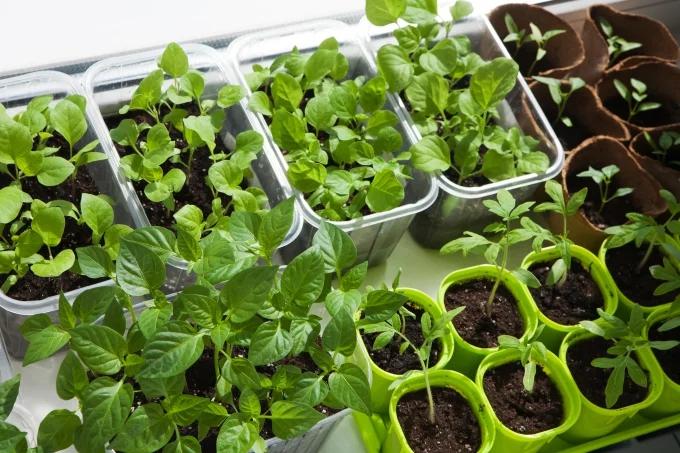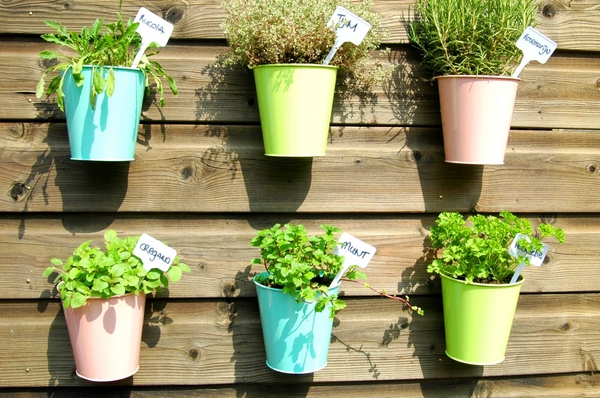Aprenda dicas para fazer sua própria horta em casa!
You decided to learn to grow vegetables. Soil preparation is the first step, but you should know how to grow them in containers and raised beds.
Advertisements
Here are some tips for growing vegetables in a home garden, from preparing the soil to keeping pests away. Read on to learn more. And don’t forget to enjoy your new hobby! We will answer your questions in the next part of this article.
Advertisements
Growing vegetables in containers
There are several factors to consider when growing vegetables in containers. The size and type of container can affect the growth and care of your garden, so choose them wisely.
Some plants need larger containers than others, so consider the type of vegetable you plan to grow before selecting the container for your garden.
Advertisements

Some vegetables don’t care what kind of container they grow in, but make sure the pot has drainage holes so they can get the water they need.
You can use various materials for your container. Choose something that can support your plant and that has adequate drainage, and that never contains toxic products. Some common containers for vegetables include barrels, flower pots, window boxes, plastic buckets, and concrete boxes.
Other options include bushel baskets and plastic lined baskets with drainage holes. For more efficient vegetable growing, choose self-watering containers with a drainage hole.
Growing vegetables in raised beds
Soil for growing vegetables in raised beds is a versatile growing medium. You can use standard potting compost or mix a mixture of garden soil and topsoil.
Soil that contains high levels of organic matter must be composted before being added to raised beds. This organic material must be well aged and must not contain excessive amounts of salts or soil pathogens.
Compost is an excellent source of nutrients and adds structure to raised beds. It also improves drainage and biological activity.
Read more:
- Learn all about Bluetooth technology and more curiosities;
- See what Whatsapp Backup is for and how to archive conversation;
- Univesp Vestibular – How it works, Notice, Test, Feedback.
Vegetables need lots of sunlight. Choose a location that receives at least six to eight hours of direct sunlight a day. Morning and afternoon sun are best, although some cool-season plants can survive in shady areas.
The drainage capacity of your bed depends on the type of soil and growing medium you use. Make sure it is located in an area with good drainage. Also, it will need to be watered regularly.
Preparing the soil for a vegetable garden
Whether you have prepared a small plot of land for a vegetable garden or a large area for a flower bed, the first step is to prepare the soil.
This step is critical to ensuring your plants thrive. By incorporating organic matter, you can improve the texture and structure of the soil and increase the production of vegetables and flowers.
The good news is that organic matter does NOT contain biosolids or sewage sludge, so you can be sure you’re using the safest, most natural products available for your garden.
Soil is made up of organic matter, which improves soil structure and retains water. This layer is also home to a diverse population of organisms that make the soil rich in nutrients and bind soil particles together.
Soil organisms include earthworms, nematodes, springtails, bacteria and protozoa. When they are blooming in your soil, they bind to soil particles and make nutrients available to your plants.
Keeping pests away from your vegetables
One of the biggest concerns for many gardeners is pests, which are a real problem in home gardens. Fortunately, keeping pests away from your vegetables doesn’t have to involve using harmful chemicals.
There are many natural methods to repel pests, including pepper, clove oil, and cedarwood oil. You can also spray your plants with pepper mixed with water or detergent. Neem oil is another natural pesticide that is effective against a number of pests.
If you’re planting a vegetable garden at home, it’s best to plant a variety of plants rather than a single crop. This is because some pests prefer monocultures, and other pests can be attracted to it.
Using a variety of plants will lessen the chances of an infestation, because pests tend to congregate in groups. And remember, pests can be a real nuisance if you only grow one type of vegetable.
Choosing the right plants for your garden
Choosing the right plants for your garden is a relatively simple task. Regardless of the size of your garden, be sure to choose plants that will thrive in the space you have available. The key to successful gardening is planning.
If you follow a few simple rules, you can reduce the time you spend in your garden after planting. Here are some tips to help you get started. After all, planning ahead is the best way to ensure your garden looks amazing year-round.

Knowing the sunlight requirements for your plants is critical. Many plants need full sun or partial shade to survive. Others need partial sunlight or shady spots.
Be sure to read the plant labels to determine if the plant will do best in your location. Generally speaking, plants that require full sun did best in a sunny area. If your garden receives minimal sunlight, you can select shady varieties.
Choosing the right location
Choosing the right location for a home garden depends on several factors. For starters, the location should have enough sunlight, be flat, well-drained, and be within walking distance of tools and water sources.
While location can be a factor, it’s not necessarily the most important factor. Whether it’s a good location for the convenience of family and friends or a convenient location for your tools, it’s important to choose a location that benefits you in the long run.
Another important consideration is the weather. Make sure the climate is protected from the wind. A garden located in a sheltered area will require less water and be warmer.
You can also choose a location where trees or other structures block the path of the cold wind. Also, be sure to look for a location that is more visible than neighboring properties. The sun is a good source of heat during the summer and will be helpful if the area is not prone to severe storms.





